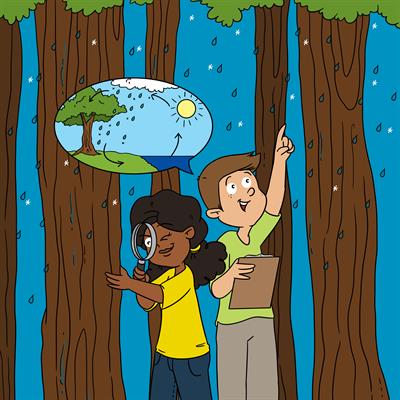
The bark side of the water cycle
Collection Editors
John Van Stan, Salli Dymond, Anna Klamerus-IwanViews
188,644 viewsParticipating Sections
Submission Deadline
Closed
Articles

Biodiversity
03/11/2022
Do Lichens and Mosses Drink From Tree Bark?
Authors
Philipp Porada, Paolo Giordani
Biodiversity
21/10/2022
Plant Litter Can Be Important Food for Stream Bugs
Authors
Checo Colón-Gaud, Keysa G. Rosas, José Sánchez-Ruiz, Pablo...
Biodiversity
28/04/2022
Branchflows: Upside-Down Rivers Clinging to the...
Authors
John T. Van Stan II, Alexandra G. Ponette-González
Mathematics and Economics
27/04/2022
How Math Helps us Predict Water Flows in Forests
Authors
Katarina Zabret, Mojca Šraj, John T. Van Stan
Biodiversity
25/04/2022
The Forest Graveyard: The Importance of Dead...
Authors
Anna Klamerus-Iwan, Ewa Błońska, Jarosław Lasota, John T...
Biodiversity
25/04/2022
Fishing for River Critters: the Importance of...
Authors
Kelsey Wilbanks, Damon L. Mullis, Checo Colón-Gaud
Earth Sciences
14/04/2022
How Trees Make Tea
Authors
Aron Stubbins, Kevin A. Ryan, John Van Stan
Earth Sciences
04/04/2022
Tree Bark: A Surprising and Diverse Reservoir for...
Authors
Courtney M. Siegert, Anna Ilek
Earth Sciences
01/04/2022
The World’S Tallest Trees Can “Drink” Fog!
Authors
Salli F. Dymond
Biodiversity
31/03/2022
Lung Lichens Face Challenges From Climate Change
Authors
Paolo Giordani, Renato Benesperi, Juri Nascimbene
Biodiversity
04/01/2022
Fungi of the “Bark Side”
Authors
Donát Magyar, John T. Van Stan II, Kandikere R. Sridhar
Biodiversity
23/06/2021
Can Trees Help Put Water Back Into the Soil?
Authors
Kelly Cristina Tonello, Julieta Bramorski
Biodiversity
04/06/2021
Koalas Give Tree Bark a Licking
Authors
Valentina S. A. Mella, John T. Van Stan IIAbout this collection
Woody plants are some of the tallest, largest, and longest-lived lifeforms on Earth. Their raw materials have literally framed and supported past human development, continues to do so today, and may aid humanity to combat and cope with future challenges, like climate change. All of the ecological and societal achievements of woody plants are due, in part, to a thin barrier between their internal and external worlds: bark. There is a lot of bark, too. Current estimates find that there is >40 million km2 of bark surface area, which is nearly as large as the entire Asian continent!Bark acts as both an environmental barrier (to pests and fire, for example) and an interface between woody plants and their environment. Even when bark is shed by a plant, or if a plant dies, bark persists and continues to act in the environment over years-to-decades. In forests where woody plants lose their leaves every season, bark, again, persists. Thus, bark has many opportunities to interact with the water cycle—from the top of live and dead tree canopies to the bottom of the forest floor.
This Collection shines a light into this ‘bark side’ of the water cycle, examining several core concepts and new discoveries from the companion article collection in Frontiers in Forests and Global Change.
There are several reasons why the ‘bark side’ of the water cycle requires our attention. First, most precipitation over land falls over forests and must pass through their leaves, bark and litter to reach the surface. At the surface, freshwater resources are getting scarcer and their management is becoming more socio-politically and economically complex. Finally, climate change is altering the patterns and timing of precipitation supplies around the world; however, the land surface and climate models used to predict and adapt to climate change only superficially include bark’s roles in the water cycle.
Therefore, it is possible that an increased curiosity and awareness of this veritable ‘bark continent’ and its importance for our planet’s water cycle can improve the appreciation and conservation of forest ecosystems and related water resources.
Would you like to submit to this collection?
For researchers interested in submitting to this Collection, please consult our author guidelines and check that you have all the essentials included before submitting



















